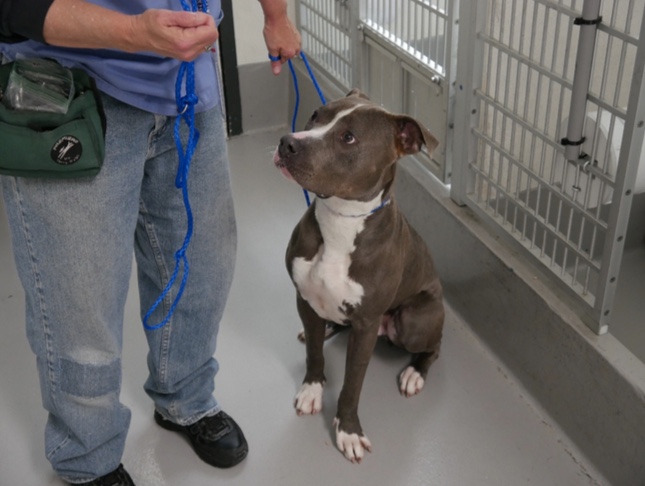News, ideas & inspiration from industry leaders

Behavior Assessments in the Shelter: How and Why?
The behavior assessment is always a juicy topic for animal welfare professionals, so it was no surprise that San Francisco SPCA’s Dr. Wailani Sung, DACVB, drew a packed house for her webinar, “Update on Behavior Assessments in the Shelter,” earlier this month. Following are some highlights from the session, and here’s how to access the recording if you weren’t able to attend.

Behavior Assessments for Shelters and Rescues: Let’s Start with the Why
“Behavior assessments should be used to evaluate a pet’s response to certain stimuli,” says Dr. Sung. “We do not recommend deliberately provoking a reaction using tools or placing the pet in a stressful situation. At the San Francisco SPCA, we observe how they interact with staff and volunteers, how they respond to people, dogs, and other stimuli when walking through the shelter and outdoor environment. The assessment allows us to determine if there are any aspects of the shelter pet’s behavior that we need to address while they are in the shelter.” Dr Sung and team use assessments to collect as much data as possible regarding the shelter pet and, if the pet is deemed safe, move them on to the different options available, such as adoption, foster or transfer.
POVBRs—and How to Use Them
The POVBR/POBR [Problem Oriented Veterinary Behavior Record or Problem Oriented Behavior Record] is a problem-based approach that documents behavior health in the shelter environment. Explains Dr. Sung, “Shelter practitioners or staff can use the concept to assess behavior problems in shelter animals and design a treatment plan leading to more positive outcomes. The POVBR is used to create a comprehensive problem list, similar to any medical problem (POVMR). It is important that behavior observations are recorded in an objective and measurable way, so they can be addressed and treated in a methodical medical fashion.” Additionally, a behavior record is invaluable when trying to make a prognosis, and critical for making outcome decisions.
Once the comprehensive problem list is created for any concerning behavior problem in a shelter pet, then a problem-based treatment plan can be created. “Often a veterinarian is not available and a full ‘academic’ diagnosis may not even be required to initiate the first steps of a behavior treatment plan. The problem-based approach, or even a working diagnosis, may be sufficient to address a specific problem in the shelter,” says Dr. Sung, “and addressing them in a timely fashion is often critical and will save lives.”
Dr. Sung’s 4 Top Tips for Training Staff to Consistently Conduct Assessments
- Do not do any testing that deliberately provokes the animal
- Learn to read the animal’s body language
- Gather more information from other staff members, volunteers, and any previous history provided at intake
- If possible, place the animal with a foster and monitor their behavior in a more normal setting.
Please pass on these tips and discuss with your staff, and here’s the webinar again if you’d like to share the link to the recording, slides and additional materials. The session is part of the Shelter Medicine series, a collaboration between the Association of Shelter Veterinarians and The Association for Animal Welfare Advancement.



